Original URL: https://www.theregister.com/2013/12/02/review_motorola_moto_g_android/
Best budget Android smartphone there is? Must be the Moto G
Motorola’s cheap-as-chips assault on no-name handsets and iThings
Posted in Personal Tech, 2nd December 2013 14:04 GMT
Review Regular readers of my phone reviews for El Reg will be well aware that I like cheap devices.
On these very pages I have sung the praises of handsets such as Huawei’s Ascend G310 and ZTE’s Skate – aka the Orange Monte Carlo – after being impressed by the quality they offered for the money demanded.
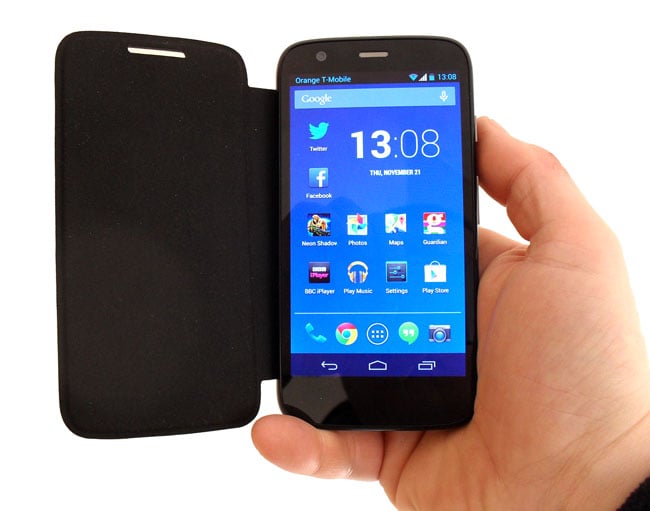
Moto G: Motorola’s cure for "landfill" Android?
Granted they didn’t render the same polished user experience or the same advanced features as their more expensive stablemates, but they catered to a market that couldn’t afford the prices, often higher by a factor of three or four, commanded by the likes of the latest iPhone or Samsung Galaxy S.
With the new Moto G, Google-owned Motorola is touting a handset that will massively increase Android’s grip on the budget market, offering for peanuts a device that gives nothing substantive away to smartphones costing three times as much.
The G crushes the Windows Phone 8 competition and shows Apple bosses to be as greedy as I’ve always suspected.
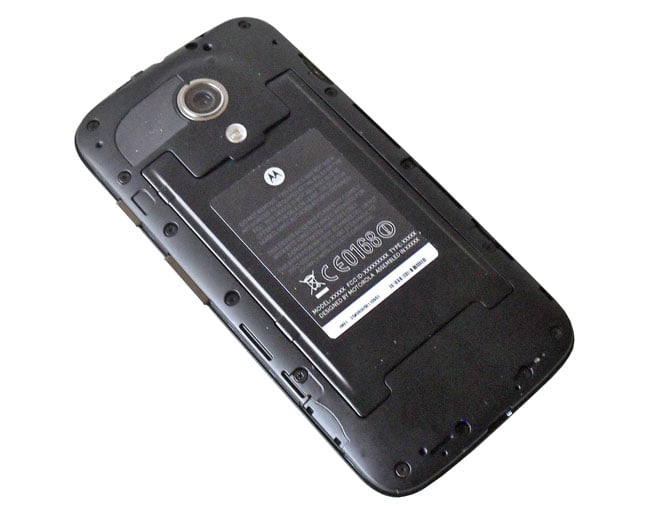
The back comes off, but you can’t readily swap out the battery
You see, the £135 Moto G (for which you'll pay $179 in the US) – and that’s SIM-free and unlocked, you can pick one up for around £120 or somewhere south of $150 in the US on PAYG – is a better device in almost every way than the LG-made Nexus 4 I reviewed at the start of the year. And the Nexus 4 was an impressive bit of kit.
To get a brief idea of what you get for your 27 fivers or 179 dollar bills, let’s quickly compare the Moto G to the similarly priced Nokia Lumia 520. Motorola gives you a 4.5-inch, 1280 x 720 display; Nokia a 4.0-inch, 800 x 400 affair. Both screens are scratch-resistant but the Motorola uses genuine Corning Gorilla Glass 3. Both have a 5MP camera but only Motorola gives you a webcam, a decent little 1.3MP affair, for these selfie-obsessed times.
Poke about inside the Moto G and you will find a 1.2GHz quad-core chip to compare to the Nokia’s dual-core 1GHz component. Yes, WinPho is lighter on its feet than Android but with only 512MB of RAM lots of games are out of the 520’s reach and do you want to bet the 520 will get the next WP update, whatever and whenever that is? Motorola has already said the G will get a bump from Jelly Bean 4.3 to KitKat 4.4 in January 2014.
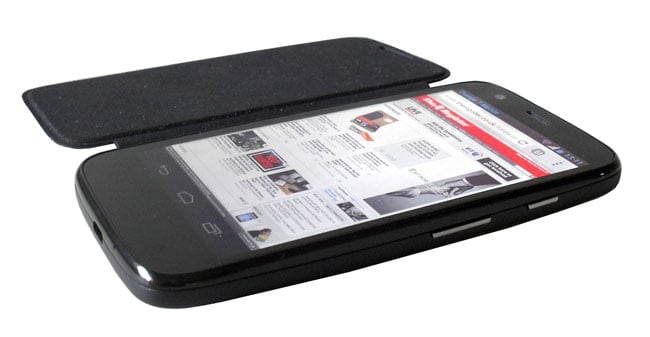
The power and volume keys are well placed
I’ll admit that Qualcomm's Snapdragon 400 chipset is not top of the tree in terms of performance. Its processor uses Cortex-A7 rather than the Cortex-A15 cores found in Krait CPUs. And you only get 1GB of RAM rather than 2. But it still returns AnTuTu benchmark scores in the region of 17,000 – which is much the same as the Nexus 4. Both the Lumia 520 and the G use the same Adreno 305 GPU.
Where the Nokia hits a home run is with its Micro SD card slot. Like the iPhone 5C, the Moto G lacks storage expansion so you are stuck with either 8GB or 16GB – around 5.5GB and 13.5GB, respectively, after the system has had its share.
Thankfully, the Moto G supports USB On-The-Go hosting out of the box. And it’s worth keeping in mind that the 16GB iPhone 5C will set you back £470 (or $549 in the US), £300 more (or $370 more) than a 16GB Moto G. Yes, the 5C comes with LTE/4G support while the Moto G, like the Lumia 520, doesn’t but if you can afford a 4G contract you can probably afford to go for a Nexus 5 rather than a Moto G and still save £170 over an iPhone.
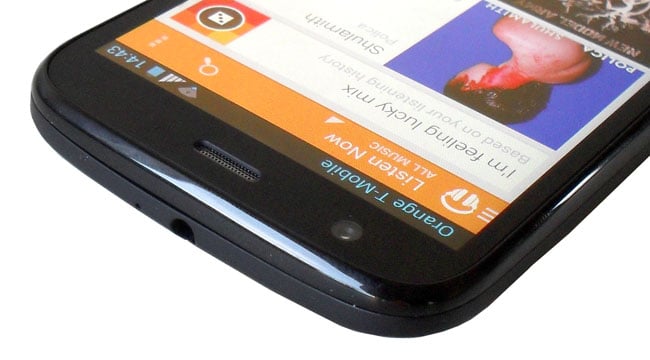
The 3.5mm jack and the top of the fascia
At this point iPhone or Lumia owners will no doubt chirp that the 5C and 520 are really well-made devices. And they are, though at the price, the 5C should be.
Solid construction
Previous cheap ‘droids have not been so well made, no point arguing otherwise. But the Moto G is a very well screwed together handset. It’s solid as a rock, comfortable to hold thanks to the rounded back and satisfyingly hefty at 143g - a good few grams heavier than the 520 and 5C, but remember the 0.5-inch larger screen.
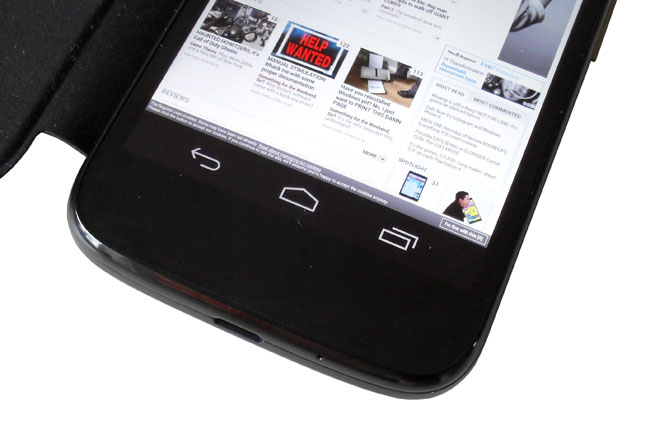
The micro USB port and the capacitive controls
At 66 x 130 x 11.6mm, the G isn’t an outstanding piece of design in any way - and curiously there is a total lack of Motorola branding on the fascia - but it is a nicely proportioned little lump.
If I had to pick an aesthetic hole [You do. — Ed.] it’s that the bezel above the display is thicker than that below, which can make the G appear a little unbalanced when you are looking at the screen in landscape.
To counter that observation, I have to point out that the micro USB port is centrally placed on the bottom while the 3.5mm audio jack is at centrally placed on the top. The chrome volume and power buttons are well situated on the right flank. In other words, everything is Where It Should Be.
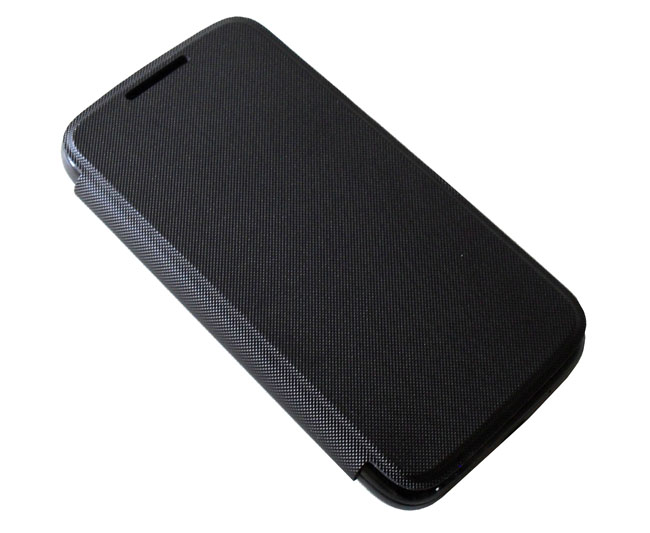
The optional Flip Shell looks the part and should keep your G looking mint
To add some spice to its looks, you can purchase coloured backs that Motorola calls Flip Shells. These replace the plastic rear and include a magnetic screen cover much like the S-View cases you can get for high-end Samsung handsets. There’s no window in the cover but otherwise the Flip Shell is a rather nice accessory.
Some folk will be disappointed that the removable back doesn’t mean a removable battery. The 2070mAh battery isn’t the biggest you’ll find in a modern smartphone but the Snapdragon 400 chipset is efficient, so getting two full days from a charge is far from out of the question.
Loop a 720p MP4 video and you’ll get around eight hours of playback. And you’ll enjoy your film: the Moto G’s speaker is a solid performer and the 329dpi display – a wee bit sharper than the iPhone 5C’s retina screen – is bright, sharp and robust of viewing angle.
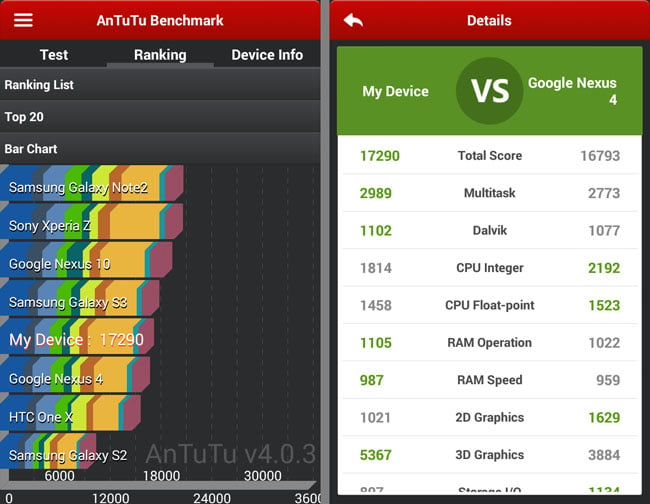
Decent performance for the price: the Moto G versus the Nexus 4 and others
I’ve read in several places that the screen is an IPS LCD affair and though I can’t find any proof of that in Motorola’s documentation it certainly looks like one to my eyes.
Motorola does say that the Moto G has a water-repellent coating but with open USB and audio ports I didn’t feel confident enough to dunk my review handset into a sink to see how far the word "repellent" will stretch.
So much for the looks and the tech, but how does the Moto G work? Thanks to running an incarnation of Android that is a very close to stock – and devoid of bloat – it’s as quick and fluid as either an LG G2 or an HTC One – or a Lumia 925 or an iPhone 5C.
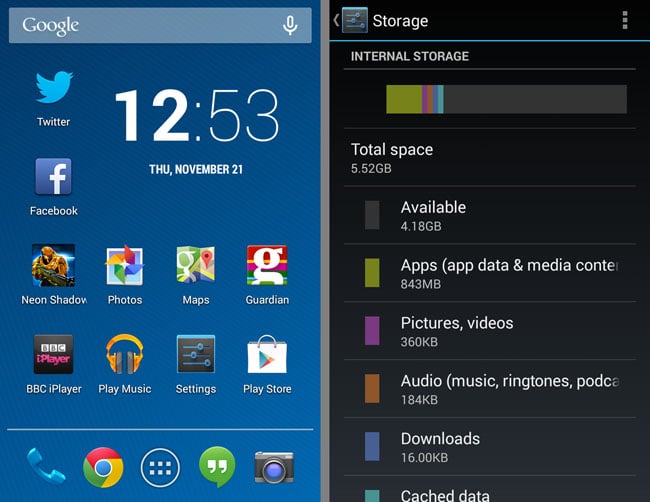
The G’s OS is darn close to stock Android (left) but you’re stuck with 8GB of storage (right)
In fact, no matter what handset you compare it to, the G’s performance is impressive. By way of example the G’s SunSpider browser speed test score of 1360 was, while not electrifying, certainly comparable to the more costly competition.
Stunner
In a more practical context, I’ve spent the last week trying to find something that the Moto G can’t do as well as the Sony Xperia Z1 or LG G2 handsets that I also currently have on my desk, or a chum’s iPhone 5C. Allowances must be made for the Z1’s 5.0-inch, 1920 x 1080 display and 20.7MP camera, and the LG’s usefully augmented version of Android and infrared transmitter. But I’ve yet to find anything.
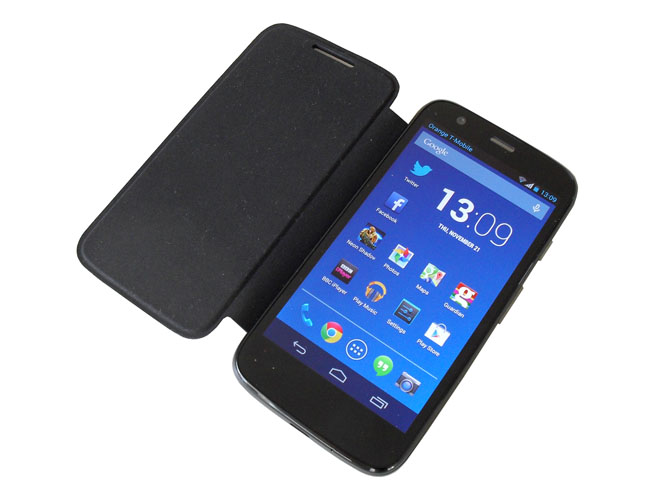
Hero in a flip shell
All the games I played - up to and including EA’s Real Racing 3 - ran just as smoothly on the Moto G as they did on the Z1, and the user experience is every bit as fluid as the iPhone 5C.
Granted, the 5MP camera can’t match the snappers fitted to the Z1 or iPhone, but it doesn’t take a bad picture, and has a well-designed and simple user interface: all the settings sit in a rotary menu that slides from the left of the screen.
Not being a Nexus device there’s no Photo Sphere mode but that’s the only criticism I can make. The Lumia 520 aside, no other phone camera at this price comes within a country mile of the image quality produced by the Moto G. If you want to shoot moving pictures, the G will record video at 720p and 30fs.
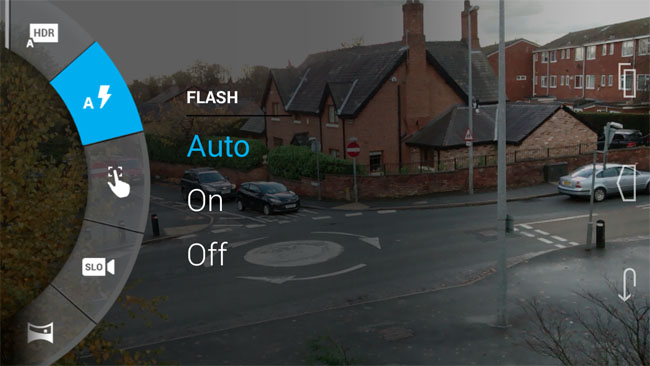
The 5MP snapper comes with an idiot-proof UI
Phone calls sounded grand thanks to active noise suppression. Wi-Fi reception and performance seemed perfectly good despite the radio being a single-band 802.11n affair. There’s even an FM radio.
The Reg Verdict
It’s easier to list the Moto G’s failings, such as they are: a fixed battery, no 4G/LTE radio, no infrared transmitter and no storage expansion. That’s really it.
In every other way – design, build, performance, software and capability – the Moto G is every bit as good as the likes of the Nexus 4 and Samsung Galaxy S3, both flagship Android devices this time last year that cost more than two and three times as much as the £135 G, respectively.
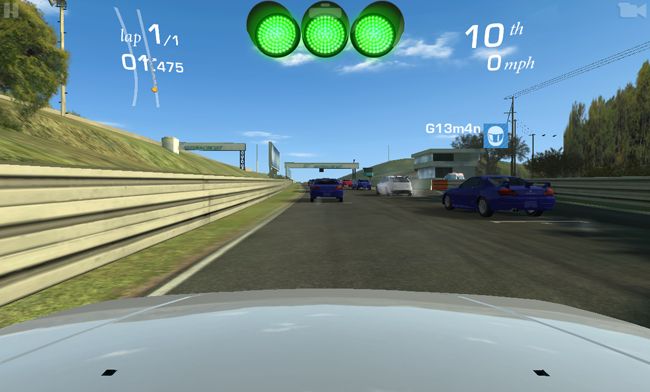
Decent Real Racing performance on a £135 phone? Oh yes
The G’s price is a ludicrously small amount of money for a gadget of this quality. I’m stuck for reasons to buy anything else unless you really must have a larger screen – buy a Nexus 5 or an LG G2 – or a much better camera – go for the the Xperia Z1 or Lumia 1020.
Why you’d buy an iPhone instead, unless you are indissolubly linked to the iOS ecosystem, or suffer from advanced Googlephobia, is beyond my reckoning. ®
Bootnote
At the time of writing, Amazon UK’s price for the 8GB model seems to be wavering around the £150 mark. That’s odd as they are a retailer linked from Motorola UK’s website and I am looking at a Motorola UK press release that states quite clearly the 8GB should only cost £135. Caveat emptor.